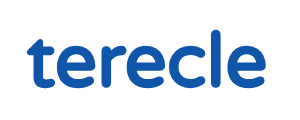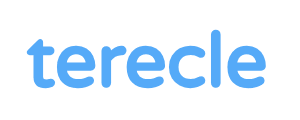Want to become a product designer? That’s a great choice. There is a growing demand for product designers across industries worldwide, as companies continue to prioritize user experience.
Although the Bureau of Labor Statistics (BLS) doesn’t have a single category for product designers, there are categories for industrial designers and for web developers and digital designers.
While industrial designer jobs are predicted to see 3% growth, jobs for web developers and digital designers have a projected 7% growth between 2024 and 2034.
We’ve put together this in-depth guide, covering all aspects of becoming a product designer, so you can decide whether this is the right profession for you.
Here’s what We’ll cover:
- What is a product designer?
- What does a product designer do?
- The difference between a product designer and a UI/UX designer
- Step-by-step guide to becoming a product designer
- Key skills you’ll need to become a product designer
- FAQs on how to become a product designer
1. What is a product designer?
A product designer is a professional who creates and designs products, which can be either physical or digital products, such as apps or websites.
Their role is largely centered on ensuring the product meets the consumer’s expectations or accurately solves their needs, while also meeting quality standards.
They also oversee the improvement of already existing products.
Learn more: What is a Product Designer? Responsibilities, Skills and More
2. What does a product designer do?
A product designer’s workflow involves:
- Research: Conducting enquiries to understand the product needs before it gets into the market. With research, the designer gets to understand the target audience and their pain points, the market needs, and everything the product needs to succeed in the market and generate revenue.
- Define and ideate: Uses insights and results from the research to define the problem and explore solutions through user personas, journey maps, and different approaches.
- Design and prototype: After creating a blueprint, the product designer develops a wireframe and prototype with detailed UI/UX, which is a sample version that mirrors how the finished product will look and function.
- Test and iterate: Test the design/prototype with real users, gathering feedback through usability testing and refining based on what works and what doesn’t work.
- Collaborate, develop, and launch: In the product development process, other stakeholders are involved, such as engineers and the business team. The product designer collaborates closely with these groups to ensure accurate implementation and also ensures that the final product not only satisfies user needs but also aligns with business goals.
3. The difference between a product designer and a UX designer
A product designer is quite different from a UX designer. A product designer takes a holistic view, ensuring the product aligns with company goals, solves user needs, and is well-designed from concept to launch.
A UX designer is more focused on the design process, making sure that the product is designed in a way that guarantees accessibility, usability, and is optimized for a seamless user experience.
Both the product designer and the UX designer work together in the product design. However, a product designer is still expected to have a good understanding of UX principles.
4. Step-by-step guide to becoming a product designer
Here is a step-by-step guide to start your career as a product designer:
Step 1. Get an education
You can start by getting a degree in product design or in a related field. Recruiters usually require a product designer to have a degree or diploma. You can study product design as a course, or take related courses such as computer science or marketing.
Another way to upskill and be a strong candidate is by taking online courses from reputable platforms like Coursera and Udemy.
This boosts your knowledge and helps you stand out in the job market.
Step 2. Learn the basics of design principles
To be a good product designer, you have to gain skills in graphic design or UI/UX design. Basic knowledge of design principles will help you know the right designs to put out that can appeal to the target audience of the product being designed.
For example, a product that will appeal to the Gen Z demographic will require bright, bold, and beautiful colors. They also tilt toward interactive and engaging designs.
Also, depending on the kind of product, you will need to understand the best design that can sell out the product. You basically need to have a sense of aesthetics.
Step 3. Master design tools
A strong grasp of visual design tools is essential as a product designer. Tools like Figma and Sketch are great for UI/UX design and prototyping, while Adobe Creative Suite (Photoshop, Illustrator, InDesign) offers advanced capabilities for photo editing, graphic design, and layouts.
Knowing how to use these tools effectively will help you deliver high-quality product designs that capture attention and resonate with the audience.
Step 4. Build sample projects
Learning the skill in theory is not just enough; you have to apply the skills in real-life projects and achieve results. Employers looking for product designers are not looking for those with skills and qualifications that are only good on paper.
You can start by looking out for internship opportunities or volunteering your skills to enable you to work on real-life projects, or you can build sample projects of your own.
This will also help you master the technical and soft skills needed to excel as a product designer.
Step 5. Create a portfolio and resume
A portfolio is meant to showcase your experience and projects you have worked on as a product designer. It helps you showcase your before/after in a real-life project, tools you have mastered, explain your process, and show the results you have achieved to make a product work.
The end goal of a product designer is to create products that meet user needs, are user-centered, functional, aesthetically pleasing, and drive business goals, ultimately delighting users, solving problems, and creating value.
Your portfolio needs to show your potential employers these metrics.
Step 6. Network and showcase your work
You have to network and showcase your work on networking platforms like LinkedIn, Dribbble, and Behance.
Connect with other product designers like you, and build a public portfolio that attracts clients either as a freelancer or a paid employee.
Networking puts you in the faces of the people who need your services as a product designer.
Step 7. Apply for product design roles
Start applying for product design roles.
Stay close to verified job boards like Indeed, Glassdoor, LinkedIn, ZipRecruiter, and Monster etc. Job boards make the job search easier by centralizing opportunities from different industries in one place.
They provide detailed job descriptions and company profiles, send real-time alerts about new openings, and allow for confidential searches, helping you stay informed on the right jobs to apply for as a product designer.
You can also join the freelancing community by going on Upwork, Fiverr, TaskRabbit, Freelancer, WeWorkRemotely, etc.
5. Key skills you’ll need to become a product designer
To be a successful product designer, you need to be adept in both technical and soft skills needed to excel in this role.
1. Research skills
A product designer has to be a good researcher because the bulk of the work involved in designing a product is to have a product that satisfies users’ needs, aligns with market trends, and business goals.
One way to gather concrete data that makes this possible is through extensive research, and having good research skills is one of the criteria hiring managers look for in a product designer.
2. Design skills
A product designer needs to have UI and UX skills. While you are not required to have in-depth knowledge, it is important to understand how this works; a good knowledge of UI/UX will help you design products that your target audience needs.
You need design knowledge on the right typography, layout, and visual hierarchy that suits the products and will be easy and responsive for the end users to interact with.
3. Problem-solving skills
Product designers also need to have problem-solving skills as they will have to be proactive in solving problems that arise during the product design process.
Ultimately, the product being designed is meant to solve the consumer’s need, so problem-solving is a skill the product designer cannot do without.
From being able to analyze problems from different angles and come up with practical solutions to being able to understand the end users’ point of view and create products that solve their needs or meet their pain points.
4. Technical skills
Another valuable and non-negotiable skill a product designer must have is knowing how to use the technical tools required for product design. They need to have in-depth knowledge of Figma, Sketch, and Adobe XD for wireframing and prototyping.
These tools will make it easier to collaborate with the designers and developers who will work on the actual product development.
Other tools the product designer needs to know are:
- Research tools, e.g, SurveyMonkey.
- Ideation tools such as Mural, Miro, and Jamboard
- Wireframing, prototyping, and design tools such as InVision, Sketch, Figma, and Adobe XD
- Product testing and analytics tools such as Maze and Hotjar
- Project management and collaboration tools such as Asana, Notion, and Trello
- 2D and 3D modeling software for physical products.
5. Communication and collaboration skills
A product designer has to collaborate with different teams throughout the design process. The designer needs to know how to communicate in different situations:
- When recruiting participants for surveys and user interviews
- Communicating and presenting ideas to internal stakeholders
- Explaining the designs to the developers and engineers
Therefore, being able to articulate and explain ideas in clear terms and listen for feedback from other people is a good communication skill a product designer needs to have.
6. Frequently asked questions
-
How long does it take to learn product design?
Usually, you will need 6 to 10 months to learn and master product designing. However, while learning, ensure you put your learning to use in real-life projects. This will help you master skills faster and speed up your learning process.
-
Can I learn product design on my own?
There are free courses you can start with, and you can start self learning on YouTube. However, networking and mentoring will guide and help you to gain clarity and move in the right direction.
-
Is product design easy or hard to learn?
Product design is a relatively easy career for beginners to get into. If you have the right learning approach and an already existing passion for designing and creating products that solve users’ needs, then this is a career to get into.
-
How much do product designers make?
According to current data, product designers typically make about $88k to $151k per year. Payment varies based on the hiring company and position.
-
Will AI replace product designers?
Product designing still requires a human touch; AI will not replace the job, but you can leverage it to do the heavy lifting, like automating routine tasks like resizing assets or creating design variations, generating design ideas, wireframes, and prototypes, analyzing user data and behavior, thereby saving you time and helping you focus on strategic aspects of the task.
Article sources
- U.S. Bureau of Labor Statistics. “Industrial Designers, https://www.bls.gov/ooh/arts-and-design/industrial-designers.htm.” Last accessed October 18, 2025.
- U.S. Bureau of Labor Statistics. “Web Developers and Digital Designers, https://www.bls.gov/ooh/computer-and-information-technology/web-developers.htm.” Last accessed October 18, 2025.
- Glassdoor. “Product Designer Salaries, https://www.glassdoor.com/Salaries/product-designer-salary-SRCH_KO0,16.htm.” Last accessed October 18, 2025.




